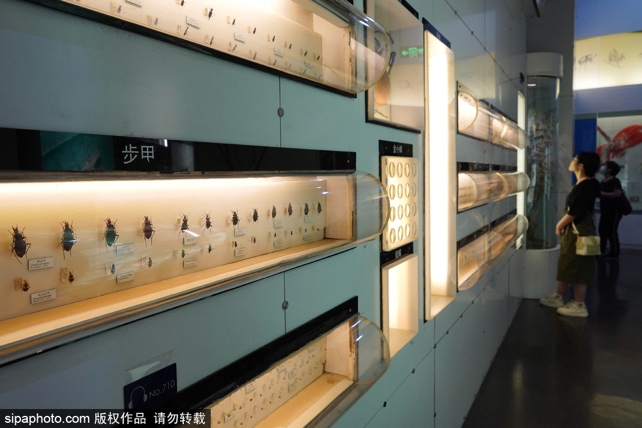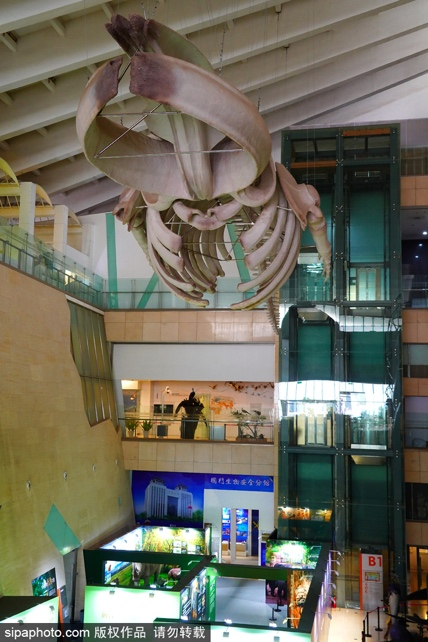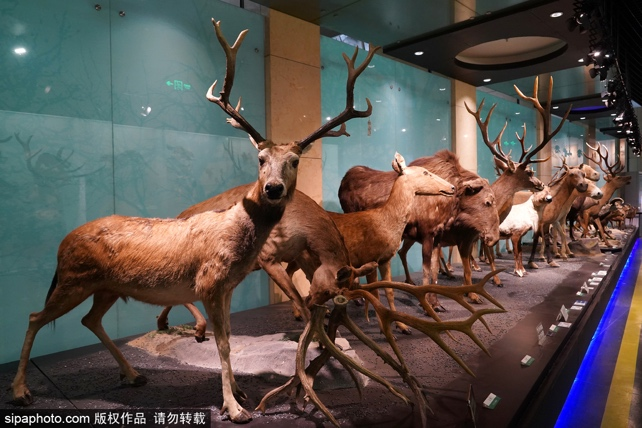The National Zoological Museum of China, located on the west side of Olympic Park, is the largest zoological museum in Asia and a recommended attraction in the "Director Hu" popular science video. Its architectural layout is modeled after the Natural History Museum in Paris, France, with a three-and-a-half-story structure that immediately catches the eye upon entering. With an exhibition area of 5,500 square meters, the museum's nine exhibition halls categorically display various specimens. The museum is affiliated with the Institute of Zoology, Chinese Academy of Sciences and originated from the animal specimen museum of the institute. It currently houses over 8.95 million animal specimens and continuously hosts various popular science activities. When visiting the national zoological museum of China and observing animal specimens, visitors no longer need to consider gender and habits but can have a comprehensive understanding from a more professional perspective of zoology. In the exhibition halls, it is common to encounter children who come to visit.

Upon entering the lobby, the most impressive feature is the 24-meter-long skeleton model showcasing the world's largest mammal in the ocean, the blue whale. The Endangered Species Exhibition Hall and the Bird Exhibition Hall are located on the sides of the first floor, where many large animal specimens are displayed. As the name suggests, the Endangered Species Exhibition Hall showcases extremely precious animals such as the South China tiger and the Baiji dolphin, the majority of which are nationally protected wild animals of the first and second levels, making them the "treasures of the museum". The Bird Exhibition Hall is a paradise for bird enthusiasts, with nearly 550 specimens on display out of nearly 1,500 bird species found in China. The sheer number is astonishing. Birds from different regions gather here, with related species living side by side, including various raptors and a variety of singing birds, providing a magnificent visual feast.

The three exhibition halls on the second floor concentrate on displaying approximately 4,500 specimens. The Insect and Butterfly Exhibition Hall is small yet exquisite, while the Human and Animal Exhibition Hall serves as a popular science base, introducing the various relationships between humans and animals. The Butterfly Exhibition Hall, with over 1,400 specimens, is truly the aesthetic ceiling of the museum. The dazzling creatures created by nature are enough to amaze every visitor. The exhibition showcases butterfly species from around the world, overwhelming visitors with their diversity. Insects constitute the largest group in the animal kingdom, with scientists currently discovering and naming over 1.5 million species, ranging from the size of a palm to as small as dust particles. The exhibition provides magnifying glasses and large-scale images to allow visitors to appreciate the various moth species presented in different arrangements.
The underground area houses four major exhibition halls, offering multiple perspectives and forms to present knowledge in zoology, including understanding animal classification and naming principles, highlighting the achievements of national biological security work, marveling at the wonders of microscopic life in the natural world, and hosting various special thematic exhibitions. Invertebrates on Earth are diverse and numerous, and the exhibition primarily showcases representative groups such as mollusks, corals, and spiders. Models of microscopic organisms are magnified several times, leaving visitors in awe of the wonders of microscopic life. The content of the communication exhibition hall is updated irregularly, sometimes featuring popular science exhibitions, photography exhibitions, painting exhibitions, and special exhibitions of various specimen competitions.

Most of the animal exhibits in the museum are made from animals that died naturally. Although the specimens may not be perfect, the variety is enough to astonish visitors. The museum also features a shop and a 4D cinema, making it an ideal place for sketching visits or taking children for a half-day of exploration and enjoyment.
Translator: ZHAO Huinan
Reviewer: TANG Yingqi



